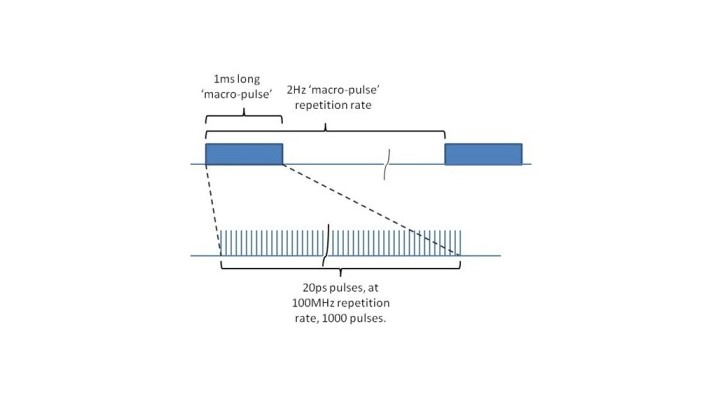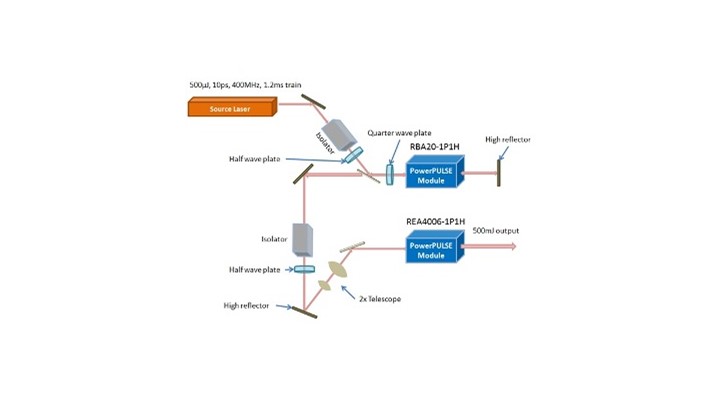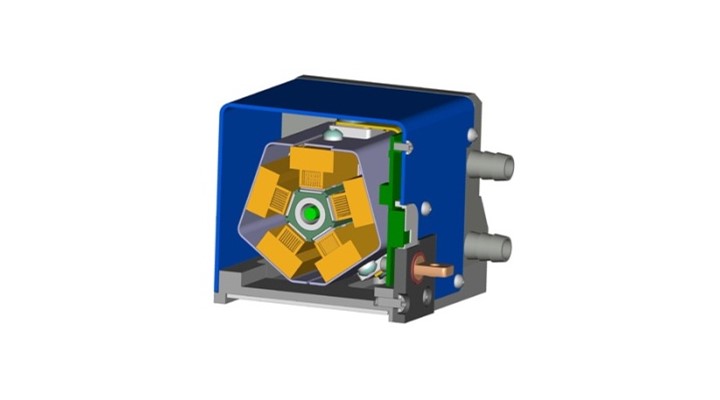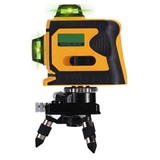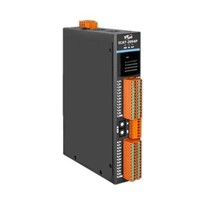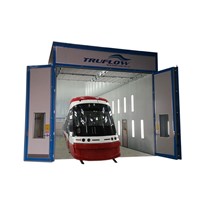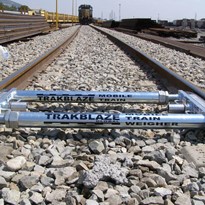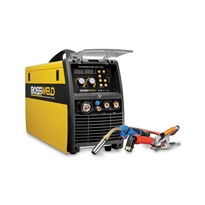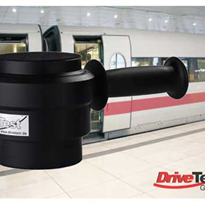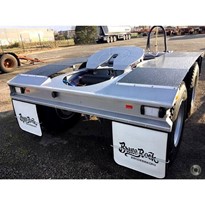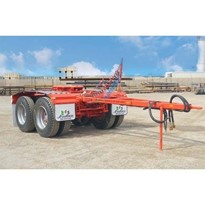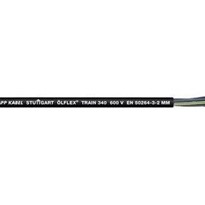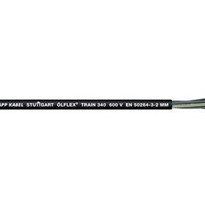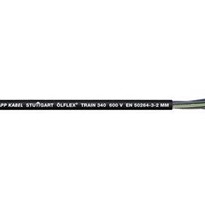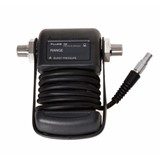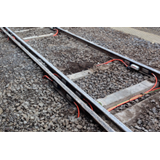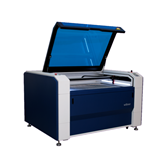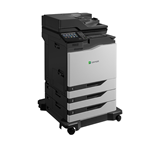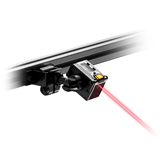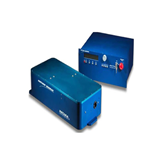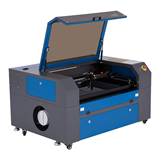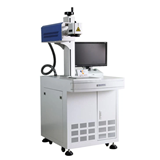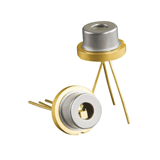Practical pulse train designs contain pulses that are tens of picoseconds in width with repetition rates in the MHz range, and have pulse bursts lasting 1-5ms or longer. Under these conditions, high average power is needed to sustain the amplification of the pulse train. Typical pulse pumped amplifiers can achieve high gains, but are often limited in total average power.
Northrop Grumman Cutting Edge Optronics (NGCEO) has developed a line of laser amplifiers specifically for high-energy, quasi-CW operation. The PowerPULSE laser amplifiers can operate at high pump powers for pumping times on the order of milliseconds. This allows high amplification factors over longer times at lower thermal loads than is available with flash lamp pumped systems. Utilising NGCEO's amplifier technology allows for a more robust pulse train design with fewer devices, less gain material, and lower overall cost.
Pulse Train Overview
There are many applications that require very high peak powers at high repetition rates. Generally, these pulses are generated by mode-locked laser oscillators, fiber laser oscillators, or modulated CW fiber lasers. Amplifying these pulses to useable peak powers can be challenging because the typical seed laser sources require gains of 30dB or more.
If the application allows, the pulses from the seed laser can be chopped into a series of 'macro-pulses', each of which contains a sequence of optical pulses at the repetition rate of the seed laser. This concept is illustrated in Figure 1.
The optical pulse train illustrated in Figure 1 typically repeats at 1-5Hz with the macro-pulse ranging from 1-5ms in length. The PowerPULSE module is ideal for amplifying these types of pulses because it can operate at high average powers and create large amplification factors.
Modeling of laser amplifiers is critical for system design. To select the right PowerPULSE module for your application, an initial design survey containing amplifier pump time, pump vs. input pulse phasing, multi-pass architectures, and management of the gain between stages must all be understood. Then, simulation of arbitrary pulse trains and amplifiers through system level tradeoffs allows for correct system design that minimizes time to 'first light'. Simulation services are offered by NGCEO.
Pulse Amplification Application
A typical pulse train amplifier system is illustrated in Figure 2. This system is designed to amplify a mode-locked, 10ps, 400MHz pulse train that has a macro-pulse duration of 1.2ms. The entire pulse train repeats at 2Hz. The amplified pulse is designed to be injected into a buildup cavity in order to obtain more than 5MW peak power. The laser source delivers about 0.5W power in 1ms and has a peak power of about 125W. This equates to 0.5mJ per pulse.
In the first stage, the RBA20 amplifier is designed to have a two pass gain of about 100, or a single pass gain of 10. After the first stage, the beam has about 50W average power (50mJ per pulse). The larger REA4006 amplifier is single-passed for an additional 4x amplification for 200W output power. The final beam amplification is 400x and the output is 200mJ per pulse. The system as described is capable of over 500mJ per pulse when the PowerPULSE modules are operated at their maximum pump current limit of 180A.
Laser Pulse Amplifiers
NGCEO's PowerPULSE laser amplifiers, operating in quasi-CW mode, produce high power pumping times on the order of milliseconds. This allows high amplification factors over longer times at lower thermal loads than is available with flash lamp pumped systems.
Laser amplifiers are the basic building blocks of any laser system. The subject amplifiers in Figure 2 are based on Nd:YAG gain materials with laser diode bars providing the optical pump energy. The amplifiers employ a side pumped rod geometry with both the rod and laser diode bars water cooled (Figure 3).
The flexible design of the PowerPULSE allows for rod diameters from 2mm to 15mm and optically pumped lengths from 30mm to 170mm. Stored energies of over 4 Joules and repetition rates of over 1kHz are attainable.
NGCEO offers modeling services to select the proper amplifier module out of our >170 standard designs. Custom amplifier designs are available upon request.


